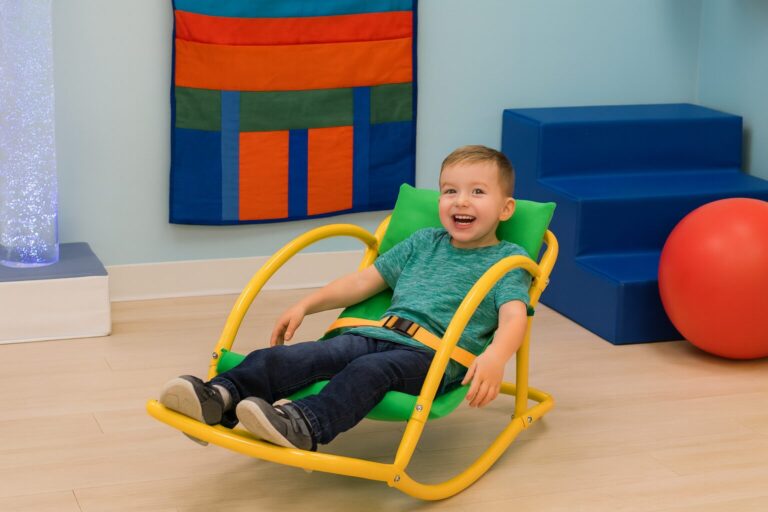Rockers are powerful tools for calming, focus, and sensory regulation. From inflatable cushions to sturdy steel-frame designs, the right rocker can help children and adults with autism, ADHD, or sensory processing needs.
Why Rockers Help
Rocking provides gentle, rhythmic vestibular input that can calm the nervous system, improve focus, and support self-regulation. Many families and therapists use sensory rockers as a safe outlet for movement needs at home, school, or therapy centers.
- Calming effect: reduces anxiety and meltdowns.
- Focus booster: movement helps attention during seated tasks.
- Safe movement: allows sensory seekers to move without disruption.
Types of Sensory Rockers
Inflatable Rockers
Budget-friendly, portable, and fun for younger kids. Easy to store when not in use.
See on AmazonFoam Rockers
Soft and safe, perfect for toddlers and preschoolers in therapy or play areas.
See on AmazonWooden Rockers
Durable and natural, often designed as play rockers for imaginative movement.
See on AmazonSteel Frame Rockers
Heavy-duty designs ideal for therapy centers, classrooms, or long-term daily use.
See on AmazonBudget-Friendly vs Advanced Options
Budget picks: inflatable rockers, wobble disks, and small foam designs are affordable and easy to use at home.
Advanced picks: steel-frame rockers and larger foam sets are investments for therapy rooms or daily sensory diets.
How to Choose: Pros & Cons
| Type | Pros | Cons |
|---|---|---|
| Inflatable | Low cost, portable, fun for young kids | Less durable, needs re-inflation |
| Foam | Soft, safe, versatile play options | Bulky, not as durable long-term |
| Wobble Disk | Compact, affordable | Limited rocking range |
| Wooden | Durable, natural look, imaginative play | Heavy, less cushioned |
| Floor Rocker | Great for reading, calming, compact | Limited to seated use |
| Steel Frame | Durable, built for daily use, therapeutic | More expensive, heavy |
Safety Considerations
- Always supervise young children when using rockers.
- Ensure size and weight capacity match the user.
- Check for stable placement on flat surfaces to avoid tipping.
- Inspect regularly for wear or damage, especially foam and inflatable models.
Frequently Asked Questions
Which sensory rocker is best for toddlers?
Foam rockers and inflatable rockers are safest and most engaging for younger children.
Are steel-frame sensory rockers worth the investment?
Yes, for therapy centers or children who need consistent vestibular input, steel-frame designs are highly durable and effective.
Do wobble disks really count as rockers?
Yes, wobble disks give rocking and balance input, making them a compact option for home and classrooms.



